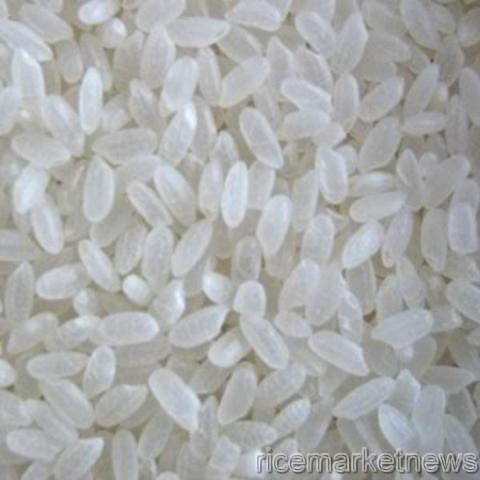Tuesday, 26 April 2011
Special Report: Thai Rice Exports
 Rice is one of the major export goods of Thailand. However, concerns over Thai rice exports have been ignited upon the upcoming formation of the ASEAN Economic Community (AEC) in 2015 as Thailand might lose rice market, at least in the ASEAN region to its fellow ASEAN friend, Vietnam.
Rice is one of the major export goods of Thailand. However, concerns over Thai rice exports have been ignited upon the upcoming formation of the ASEAN Economic Community (AEC) in 2015 as Thailand might lose rice market, at least in the ASEAN region to its fellow ASEAN friend, Vietnam.
Center for International Trade Studies (CITS) Director Dr Aat Pisanwanich from the University of the Thai Chamber of Commerce reported the studies on impacts of the AEC formation to the Thai rice market. He elaborated that Vietnam, which is the major rival of Thailand in rice exports, has the chance to take Thailand’s place as top rice exporter to the ASEAN markets if export tariff is cut to 0% in the AEC formation in 2015. He also pointed out that Thailand will be at risk of losing market shares, notably in the Philippines and Malaysia, which are important export targets of Thailand.
Dr Aat indicated that Vietnam will be able to dominate the rice market in ASEAN since qualities of Thai and Vietnamese rice are not much different while Vietnamese rice is cheaper than Thai rice by about 125 US dollars per ton. Taking into account the Vietnamese dong devaluation, he said Vietnamese rice becomes even cheaper than Thai rice. Thailand hence might also lose market shares in Africa in the future.
The director suggested that Thailand should publicize and promote Thai rice, especially premium grades, in upper markets by focusing higher quality of Thai rice among consumers. He also advised that Thailand should set up a panel to study pros and cons of Thai rice upon the AEC formation within three years from now in order to maintain its market share in the global market in general.
In preparation for the AEC, the public sector should urgently educate Thai farmers about the AEC via regional networks, universities and farmer communities since production efficiency should be improved and farmers should have more time to adjust to market demands. Whether Thailand will continue to maintain its grip in the global rice business under the coming integration of ASEAN markets, find out in the second part of this special report to follow, for other problems associated with Thai rice exports and the AEC.
The planned formation of the ASEAN Economic Community (AEC) in 2015 has sparked growing concern among local traders that Thai rice exports will lose market shares to Vietnam. The private sector is, therefore, proposing solutions such as importing rice from neighbors similarly to what Vietnam is doing.
Thai Rice Exports Association Honorary President Chukiat Opaswong admitted that at present Vietnam has been exporting larger quantities of rice and is trying to turn itself into the rice-trading hub of Indo-China and ASEAN region after 2015 when the AEC is established. He pointed out that Vietnam could export more rice as it has been importing rice from neighbours, notably Cambodia which is selling rice surplus from domestic consumption; thereby, Vietnam can keep rice prices cheaper than Thai rice thanks to the larger quantities.
Mr Chukiat suggested that Thailand should adapt itself by using credibility in rice exports and importing more rice to make the country the regional and global hub for rice trade; however, he noted that free trade zoning should be set up to prevent negative impacts on local farmers and mixture of foreign and Thai rice. He cautioned that Thailand might lose the status of being the champion of global rice traders upon failure to take any appropriate action.
Meanwhile, the Ministry of Commerce clarified that Thailand is actually importing rice from neighboring countries under the ASEAN Free Trade Agreement (AFTA); however, only imports of broken milled rice are allowed for industrial production such as noodles and flour, not for direct consumption due to fear for crop mixing problem. In addition, the imports can be approved only at six border checkpoints with adequate inspection to prevent low quality rice and genetically modified rice from mixing with premium rice in Thailand.
Instead of worrying about losing market shares to Vietnam, the Minister suggested that related sides should have paid greater attention to the real objective of the AEC which is to enhance economic cooperation. Hence, it will indeed be better if Thailand and Vietnam cooperate and use the AEC for mutual benefits and turning ASEAN as a whole to be the global hub for rice trade.
(Source: http://www.pattayamail.com/business/special-report-thai-rice-exports-part-2-2916)

This post was written by: HaMienHoang (admin)
Click on PayPal buttons below to donate money to HaMienHoang:
Follow HaMienHoang on Twitter













0 Responses to “Special Report: Thai Rice Exports”
Post a Comment